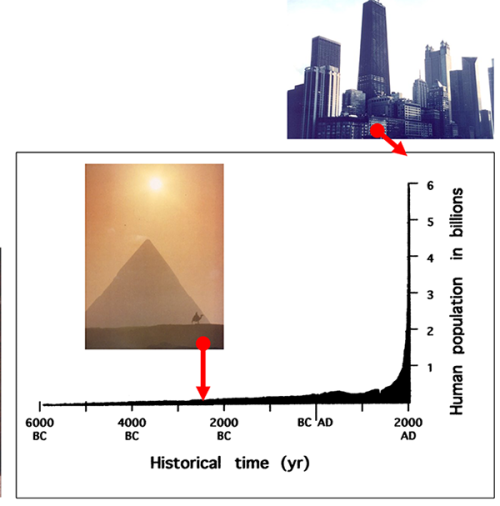Throughout history, human population growth has significantly impacted Earth's environment. The current geological era, the Anthropocene, highlights how human activities have drastically altered natural processes. We have changed atmospheric chemistry, water cycles, nutrient cycles, and even the rock cycle. For example, widespread deforestation in the last 200 years has replaced native forests with cities, agricultural land, or monoculture tree farms. This deforestation leads to sediment loss and altered hydrology. Almost every modern human activity, such as agriculture, transportation, and urbanization, shows its impact on the planet.

Key indicators of the Anthropocene include climate change, rapid species extinctions, and significant disruptions in biogeochemical cycles. This era began around the Industrial Revolution in the mid-18th century and continues to the present day.
A simplified way to understand the effect of population on resource usage involves examining the two components of the Overall Impact equation:
Overall Impact = Population x Consumption
As illustrated in Figure 3.2, for much of human history, the global population remained at levels that imposed relatively modest demands on natural resources. Additionally, the types of resources utilized had spatially-limited and long-term effects on environmental and ecosystem health.
In the next section, we will look into the composition of the atmosphere.
